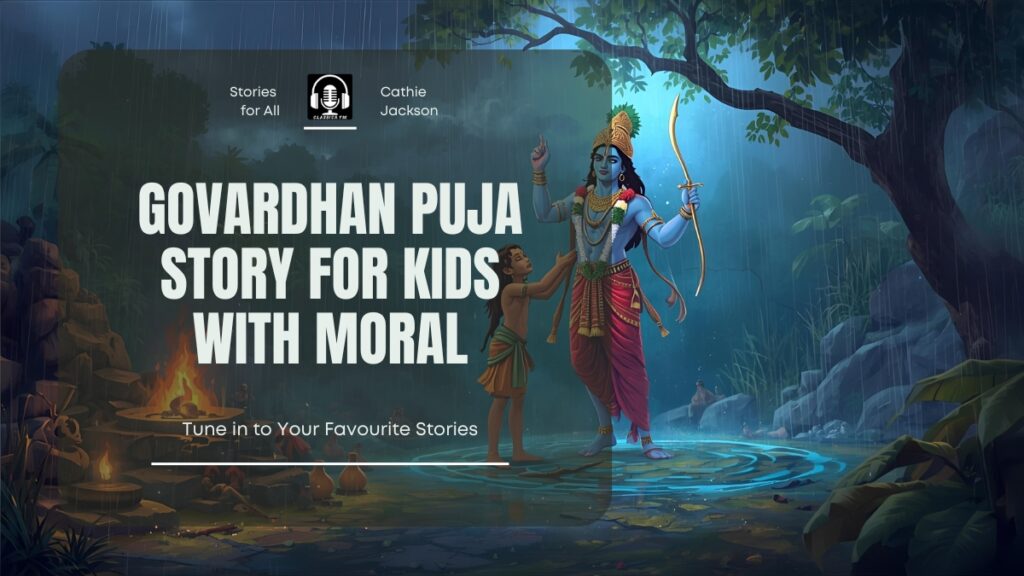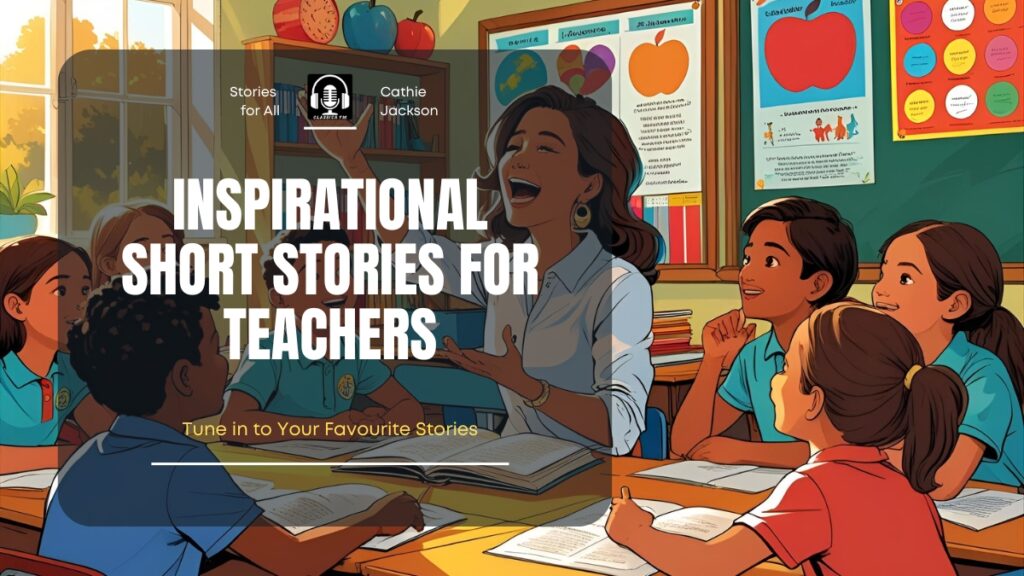Welcome! In this article, we will explore the Govardhan Puja story for kids with moral values in a simple, engaging way. When children ask, “Why do we do Govardhan Puja?”, you can tell them this story and its lessons.
We’ll look at what happened, why it matters, how families celebrate, and what we can learn. This article is structured to help you and the little ones enjoy the tale and absorb the moral meaning.
What is Govardhan Puja?
Meaning & Timing
The festival of Govardhan Puja (also spelled “Govardhan Pūjā”) is celebrated the day after Diwali in many parts of India. It is also known as Annakut (meaning “mountain of food”).
On this day people remember how Krishna lifted the hill named Govardhan Hill to protect his village.
Families build mini-hills, prepare lots of vegetarian food, and thank nature and Krishna.
Why Kids Should Know About It
- It’s a fun story of a little boy (Krishna) doing something amazing for his friends and animals.
- It teaches respect for nature, humility, devotion, and community.
- It connects with festivals and culture children might celebrate or hear about.
Govardhan Puja Story for Kids With Moral
Imagine a little boy lifting an entire hill on his tiny finger to save his village from a terrible storm! That’s Krishna’s amazing Govardhan Puja story, full of courage, devotion, and lessons about nature, humility, and helping others.
1. Krishna Lifts Govardhan Hill
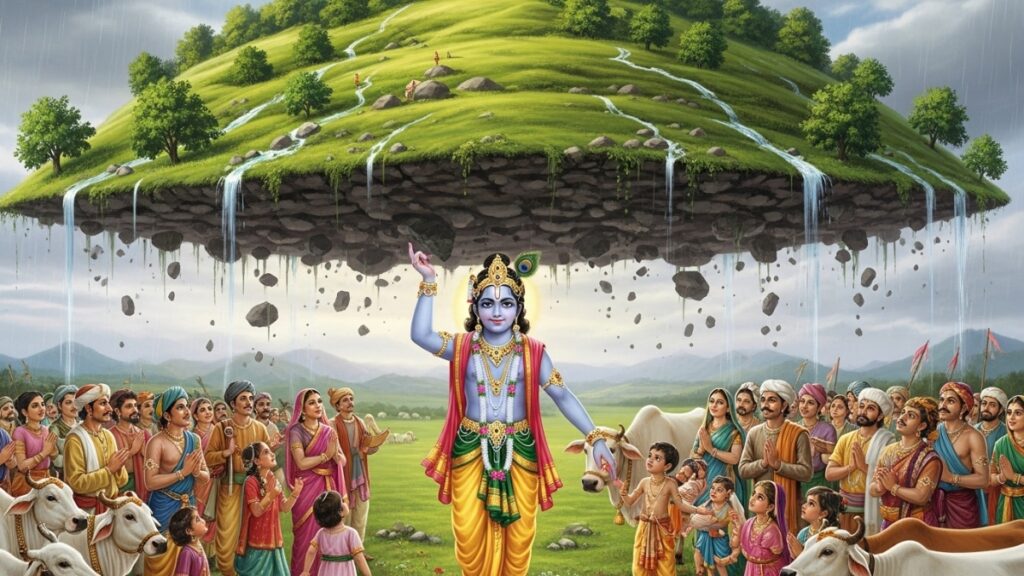
A long time ago, in a village called Vrindavan, there lived a little boy named Krishna. He loved playing with his friends and taking care of the cows.
Every year, the villagers prayed to Indra, the god of rain. They believed he gave rain to grow their crops and feed the animals.
One day, Krishna asked, “Why do we only pray to Indra? The hill, the cows, and the rivers help us every day. Shouldn’t we thank them too?”
The villagers were surprised but listened. Krishna asked them to worship Govardhan Hill instead of only Indra.
When Indra heard this, he became angry. He sent a huge storm with heavy rain, wind, and thunder. Everyone ran for shelter.
Krishna saw the villagers and animals were scared. With just his little finger, he lifted the big Govardhan Hill. It became a safe umbrella for everyone.
For seven days, Krishna held the hill above them. Finally, Indra realized Krishna was special. He stopped the storm and said sorry.
From that day, people celebrated Govardhan Puja. They thanked Krishna and nature for keeping them safe.
Moral
- Respect nature.
- Humility is better than pride.
- Helping others is always good.
2. The Clever Cowherd Boys
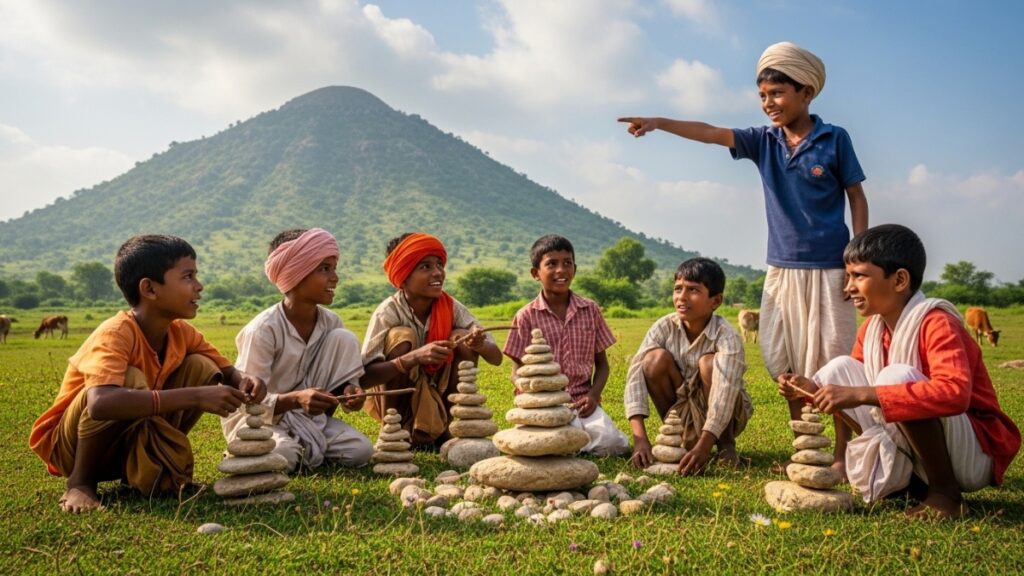
In Vrindavan, Krishna loved playing with his friends, the cowherd boys. They spent their days looking after cows and running through green fields.
One day, Krishna said, “We should thank Govardhan Hill and the cows too. They help us every day.”
The cowherd boys were curious. “How can we do that?” they asked.
Krishna smiled. “Let’s invite all the villagers and make a small mountain of food for Govardhan Hill. We will thank nature for everything.”
The boys ran around, collecting fruits, grains, and sweets. They helped Krishna arrange the food into a beautiful little hill.
When Indra saw the villagers paying attention to the hill instead of him, he became angry. He sent heavy rain and thunder.
The clever boys followed Krishna’s instructions. They stayed calm, helped each other, and took shelter under the hill Krishna lifted. The animals were safe too.
After the storm, everyone realized how smart and brave Krishna and the boys were. They also learned to respect nature and help each other.
Moral
- Be clever and kind.
- Work together to solve problems.
- Respect and thank nature every day.
3. The Cow Who Loved Krishna
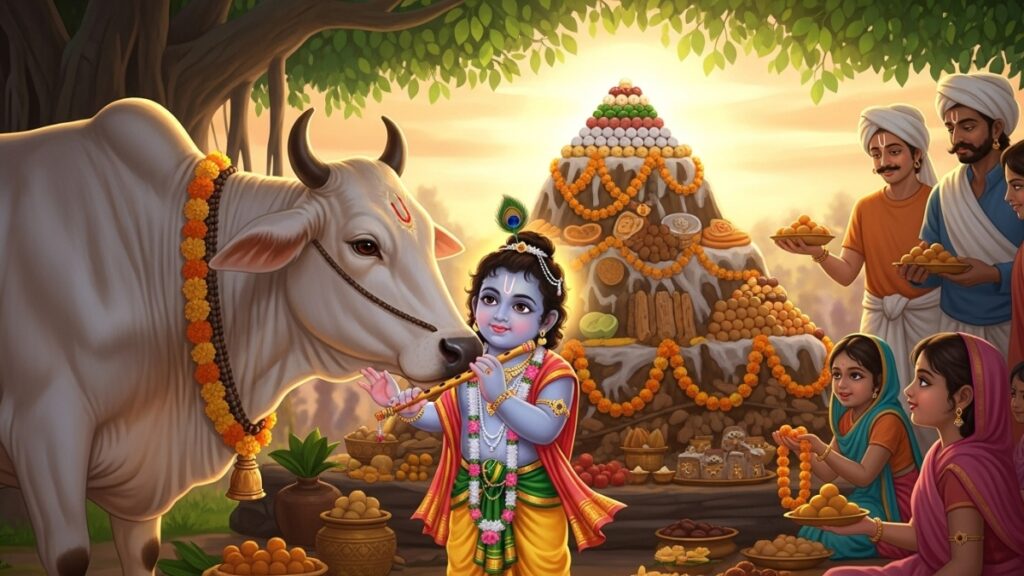
In the green fields of Vrindavan, Krishna spent his days playing the flute and caring for the cows. He talked to them like they were his best friends.
There was one cow named Surbhi. She loved Krishna more than anyone. Wherever Krishna went, Surbhi followed — to the river, to the meadows, even when he played tricks on his friends.
One afternoon, dark clouds gathered over Vrindavan. It wasn’t a normal rain cloud. It was Indra’s storm. He was angry because the villagers had listened to Krishna and stopped worshipping him.
Soon the rain poured down. The thunder was loud. The wind howled through the trees. The cows began to panic.
Surbhi ran to Krishna, crying out loudly. Krishna gently patted her and said, “Don’t be afraid, my dear one. I’ll keep you safe.”
Then Krishna did something no one expected. With his little finger, he lifted the huge Govardhan Hill! “Come, everyone!” he shouted. “Bring the cows, bring the children — stay under the hill!”
Surbhi was the first to step under the hill. She mooed loudly, calling the other cows. They followed her and soon everyone was safe and dry.
For seven days, Krishna held the hill high. Surbhi stayed close to him the whole time, licking his hand, as if to say thank you.
When the storm finally stopped, the villagers cheered. They hugged their cows and thanked Krishna. But Krishna smiled and said, “Don’t thank me. Thank Surbhi. Her love brought everyone to safety.”
From that day on, Surbhi became the symbol of love and loyalty in Vrindavan.
Moral:
- True love means standing by those you care for.
- Kindness and courage protect others.
- Even one small act of love can help many.
4. Little Villagers’ Feast
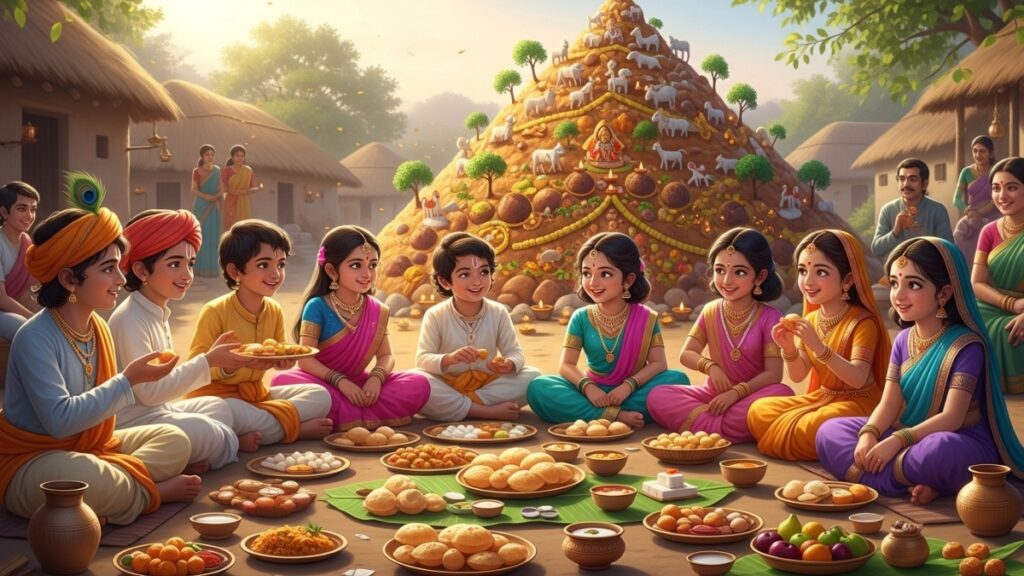
The day after Diwali, the whole village of Vrindavan was buzzing with excitement. It was time for Govardhan Puja, and everyone wanted to do something special for Krishna.
Krishna told the villagers, “Today, we’ll thank Govardhan Hill for feeding our cows and keeping our village safe. Let’s make a big mountain of food as our offering.”
The children jumped with joy. “A mountain of food? That sounds fun!” they said.
Soon, all the little villagers got busy. Some gathered fruits and grains. Some helped their mothers cook sweets and laddoos. Even the smallest children brought butter and curd in tiny pots.
They placed all the food together in the middle of the field. Piles of rice, dal, vegetables, and sweets grew taller and taller until it looked like a delicious, colorful mountain.
Krishna smiled. “This is our Annakut,” he said. “It means ‘mountain of food.’ Today, we thank nature and share with everyone.”
The smell of food spread through the village. Birds chirped above, and cows mooed happily. Everyone offered prayers and sang songs.
After the prayers, Krishna said, “Now it’s time to share!” The villagers laughed and began serving food to everyone — friends, neighbors, and even strangers who had wandered in.
No one went hungry that day. The children danced around the food mountain, their faces glowing with joy.
As the sun set, Krishna said softly, “When we share, we make the world a happier place.”
That night, the little villagers fell asleep smiling, their hearts full — not just with food, but with kindness.
Moral
- Sharing brings happiness.
- Working together makes big things possible.
- Thank nature for what it gives us every day.
5. The Storm That Teaches
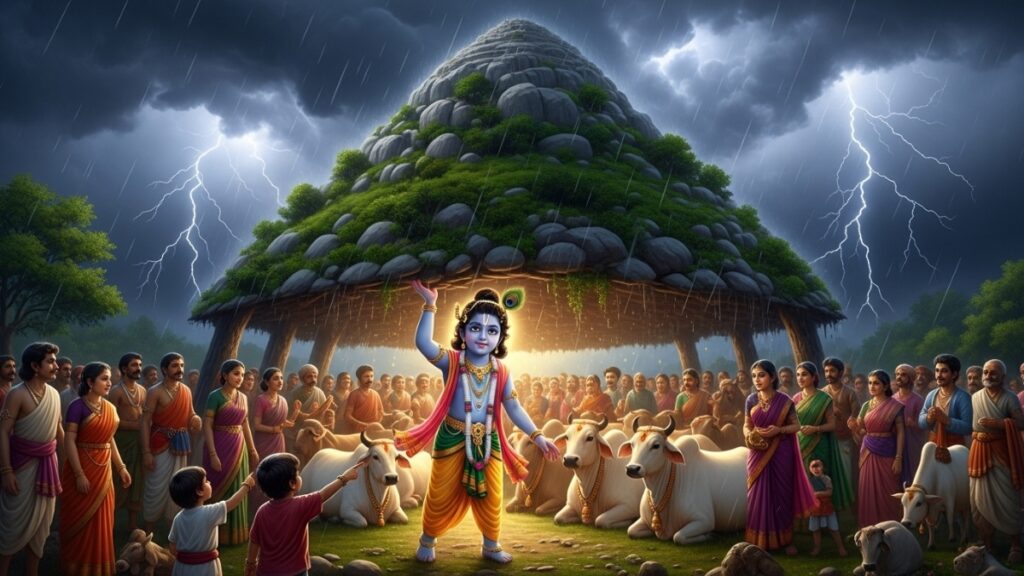
One morning in Vrindavan, dark clouds covered the sky.
The wind howled, and thunder rumbled across the hills.
The villagers ran around in worry. “Oh no! The storm is coming! What will happen to our homes and our cows?” they cried.
The rain began to pour heavily. Water filled the fields. Trees bent low. The cows huddled together, frightened.
The villagers ran to Krishna. “Please help us, Krishna! We prayed to Lord Indra, but the storm is only getting worse!”
Krishna looked calm. “Do not worry,” he said gently. “Let’s take shelter together.”
He walked to the great Govardhan Hill and smiled. Then, to everyone’s surprise, he lifted the entire hill with his little finger!
The villagers gasped. “He’s lifting the hill like an umbrella!”
“Come quickly!” Krishna called. “Bring your families, your cows, and your food. We will all stay safe under Govardhan Hill.”
Everyone rushed beneath the hill. The rain poured harder, but not a single drop touched them
The children played, the cows rested, and the people sang songs of praise.
For seven days and nights, Krishna held the hill high. He never looked tired. He smiled the whole time.
When Indra, the rain god, saw this, he felt ashamed. He realized Krishna was protecting his people with love, not anger.
Indra stopped the storm and came down from the clouds. He bowed before Krishna. “Forgive me,” he said. “I forgot that kindness is stronger than pride.”
Krishna lowered the hill slowly. The sun came out, shining bright once again. The villagers cheered and hugged each other.
That day, they learned something they would never forget — faith and unity can overcome any storm.
Moral
- Believe in goodness, even when things seem hard.
- Stay calm and help others in tough times.
- Kindness and courage always win over pride.
6. Krishna and the Mischievous Indra
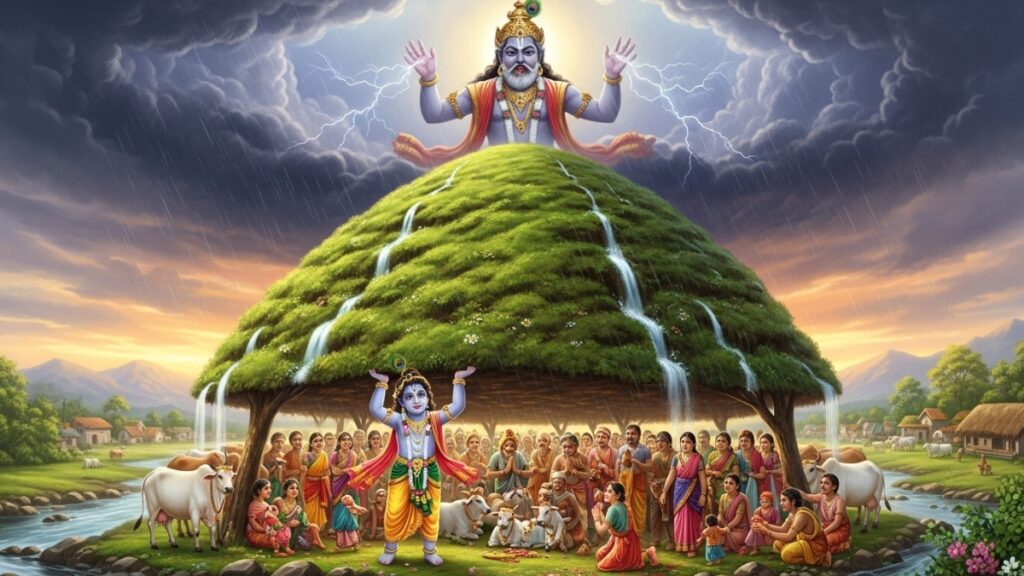
It was a bright morning in Vrindavan.
The fields were green, the cows were happy, and little Krishna was playing his flute under a tree.
Everyone loved Krishna — his laughter, his songs, and his kind heart.
But far above the clouds, Lord Indra, the god of rain, was watching.
Indra liked when people prayed to him. Every year, the villagers offered food and sweets so he would send rain for their crops.
But that year, Krishna had a different idea.
He gathered the villagers and said, “Why should we worship Indra alone? It is Govardhan Hill that gives us grass for our cows, wood for our fires, and water for our streams. Let’s thank the hill instead.”
The people nodded. It made sense.
So they cooked delicious food, made garlands, and walked around Govardhan Hill, singing songs.
Up in the clouds, Indra was not pleased.
“How dare they forget me?” he thundered. “I’ll show them my power!”
Dark clouds gathered quickly. The sky turned black.
Lightning flashed. Rain poured like never before.
The villagers were terrified. “Krishna! What should we do?”
Krishna smiled gently. “Don’t worry. Come with me.”
He walked to the great hill and raised his little finger.
To everyone’s surprise, he lifted Govardhan Hill high into the air — just like a giant umbrella!
“Come under here,” Krishna said. “We will all be safe.”
Men, women, children, and even the cows huddled under the hill.
The storm raged on for seven days and nights, but not one drop of rain touched them.
Indra watched from the sky, amazed.
“Such power from a boy?” he said to himself. “This must be no ordinary child.”
At last, Indra stopped the rain. He came down to Vrindavan, shining like a rainbow after the storm.
He bowed before Krishna and said softly, “Forgive me. I let my pride guide me. You taught me a lesson — that love and humility are greater than pride.”
Krishna smiled. “We all make mistakes, Indra. What matters is learning from them.”
The villagers cheered. The sun shone again.
And from that day, Govardhan Puja became a day of gratitude, not fear.
Moral
- Pride can bring storms, but humility brings peace.
- True power lies in love, not anger.
- Always be thankful for nature and its gifts.
7. King Vajra and the Hill
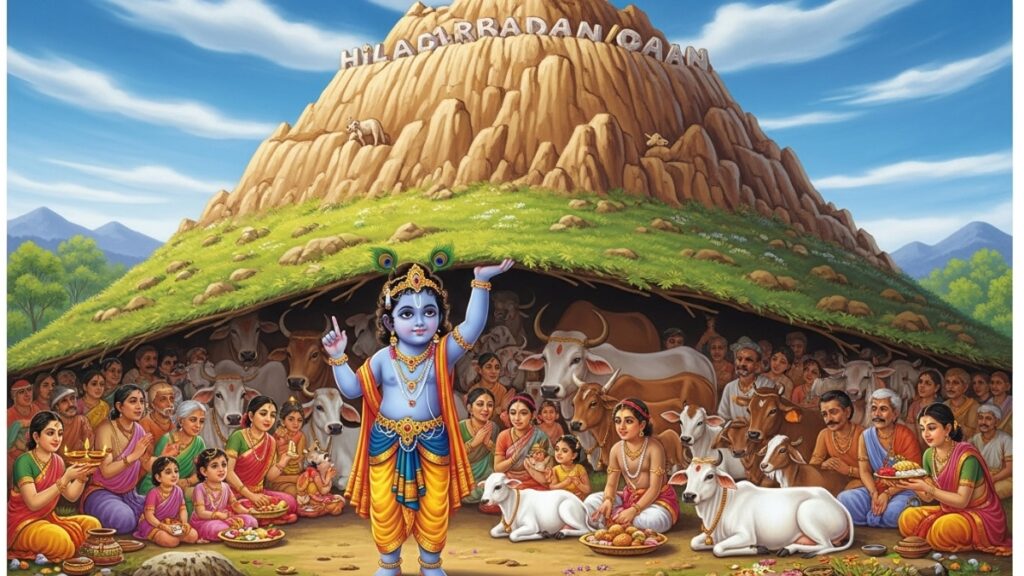
Many, many years after Lord Krishna lived in Vrindavan, a young king named Vajra ruled there.
King Vajra was the great-grandson of Krishna.
He had heard many stories about his famous ancestor — how Krishna lifted Govardhan Hill, how he played his flute, and how he taught people to love nature and live with kindness.
But as time passed, people began to forget those lessons.
Some even stopped visiting Govardhan Hill. The villages around it grew quiet.
One morning, King Vajra rode out with his soldiers to see the hill for himself.
When he reached it, he stopped and stared in awe. The great hill stood tall and peaceful, surrounded by green trees and grazing cows.
He dismounted from his horse and walked closer.
The air felt special, as if filled with Krishna’s old songs.
King Vajra said softly, “This is where my great-grandfather lifted the hill to protect his people. How can we forget such a place?”
He called his ministers and villagers together.
“From today,” he said, “we will once again celebrate Govardhan Puja to honor Lord Krishna’s love and Govardhan Hill’s blessings.”
The villagers clapped with joy.
They cleaned the paths, decorated the hill with flowers, and prepared sweet dishes made from milk, butter, and honey.
King Vajra joined them in making a big offering of food — Annakut, which means “mountain of food.”
They placed it before the hill and prayed, saying, “We thank you, Govardhan, for giving us life, food, and shelter.”
That night, the whole village glowed with lamps.
The children danced. The elders sang about Krishna and his kindness.
King Vajra stood quietly and looked at the hill.
He felt peace in his heart. He knew that as long as people remembered this story, they would never forget what Krishna taught — to live with gratitude and protect nature.
And from that time, the Govardhan Puja became a yearly tradition again, spreading from Vrindavan to every corner of India.
Even today, when people make little hills of food or mud, they remember King Vajra’s effort to bring back Krishna’s message of love and faith.
Moral:
- True devotion means remembering good deeds, not just rituals.
- Gratitude keeps traditions alive.
- Protecting nature is also a way of worship.
Key Elements Explained for Kids
Who are the characters?
- Krishna: The hero of the story, playful yet wise.
- Villagers, cows & nature: The community that depends on nature.
- Indra: The traditional god of rain whose ego gets challenged.
What are the symbols?
- Govardhan Hill: Nature’s support — food, shelter, protection.
- Mini-hill made by families: A reminder in homes of the real hill.
- Annakut or “mountain of food”: A big offering symbolizing gratitude to nature.
What happens in the story?
- A shift from fearing only the rain-god to recognising nature as vital.
- A big storm representing challenges in life.
- Krishna’s protection symbolising what faith, humility and community can achieve.
Moral Lessons for Kids
When reading the Govardhan Puja story for kids with moral, highlight these points:
- Respect nature: The hill and cows sustained the village — we depend on nature too.
- Humility vs ego: Indra’s ego caused trouble; humility and cooperation brought peace.
- Community & caring: Krishna protected the entire village and animals — caring for others matters.
- Faith & responsibility: The villagers trusted Krishna and made efforts themselves (offered food, etc.)
- Gratitude: The festival teaches us to say “thank you” to what supports us daily.
You may ask children: “What would you do if you were helping someone like Krishna did?” or “How can we show respect for nature today?”
How Families Celebrate Govardhan Puja
Typical rituals
- Families build a small hill of cow-dung or mud (symbolically representing Govardhan Hill).
- They prepare lots of vegetarian food (called Chappan Bhog — 56 items in some places) to offer.
- People perform a ‘parikrama’ (walking around) the hill or around the symbol.
- After prayers, food is shared among family/friends as ‘prasad’.
- In schools or for kids: storytelling sessions, colouring activities of the hill and Krishna.
Why each ritual is meaningful
- Hill building: reminds us of shelter and how nature protects.
- Food offering: reminds us of abundance and sharing.
- Parikrama: movement and effort show devotion.
- Sharing prasad: we invite others into the joy, showing community.
Simple ideas for kids at home
- Draw or colour a hill and cows.
- Bake or prepare a small “mountain” of food with your child (cupcakes stacked, or fruits).
- Read aloud the story (see above) and talk about what you would do.
- Plant a small tree or plant and say a thank-you to nature.
Frequently Asked Questions
What is the Govardhan Puja story for kids with moral?
It is the story of Krishna lifting the Govardhan Hill to protect his village, teaching us respect for nature, humility, faith and community. This story is often told in simplified form to children.
When is Govardhan Puja celebrated?
What is Annakut and Chappan Bhog?
Why do people build a mini-hill of cow-dung?
It symbolises Govardhan Hill — the natural hill Krishna lifted. It reminds families of nature’s role and how the story connects to everyday life.
Why This Story Matters Today
- Environmental awareness: The festival points to our dependence on nature and invites us to be eco-friendly.
- Cultural identity: For many families and communities it links them to heritage and tradition.
- Child learning: Telling the story to kids builds moral values and connects them to festivals.
- Community building: Celebrations bring people together, share food, joy and make inclusion.
Tips for Teaching Kids the Story
- Keep the language simple and animated: “Little Krishna, big miracle.”
- Use pictures or drawings of a hill, cows, village, and storm.
- Ask questions: “What would you do if you were under a big hill protecting cows?”
- Use the ritual as a teaching moment: while making the mini-hill ask: “What does the hill stand for?”
- Encourage kids to draw or write their own version of the story.
- Link moral to everyday acts: like helping a friend or watering a plant.
Conclusion
In summary, the Govardhan Puja story for kids with moral is a wonderful tale of courage, devotion, respect for nature and community. It shows how even one small person (Krishna as a boy) can do great things when he cares for others and the world around him.
As you share this story with children, you help them recognise the real world value behind a festival: that nature matters, humility helps, gratitude nurtures, and community keeps us strong.
So this Govardhan Puja, build that mini-hill, prepare a small feast, and tell the story with its moral. Encourage kids to think: “How can I help? How can I show respect? How can I be humble?”
Call to action: Try telling this story tonight with your child or at school, then ask them to draw what the hill and Krishna might look like. Share the drawing or story with your family and friends to bring the moral alive.

